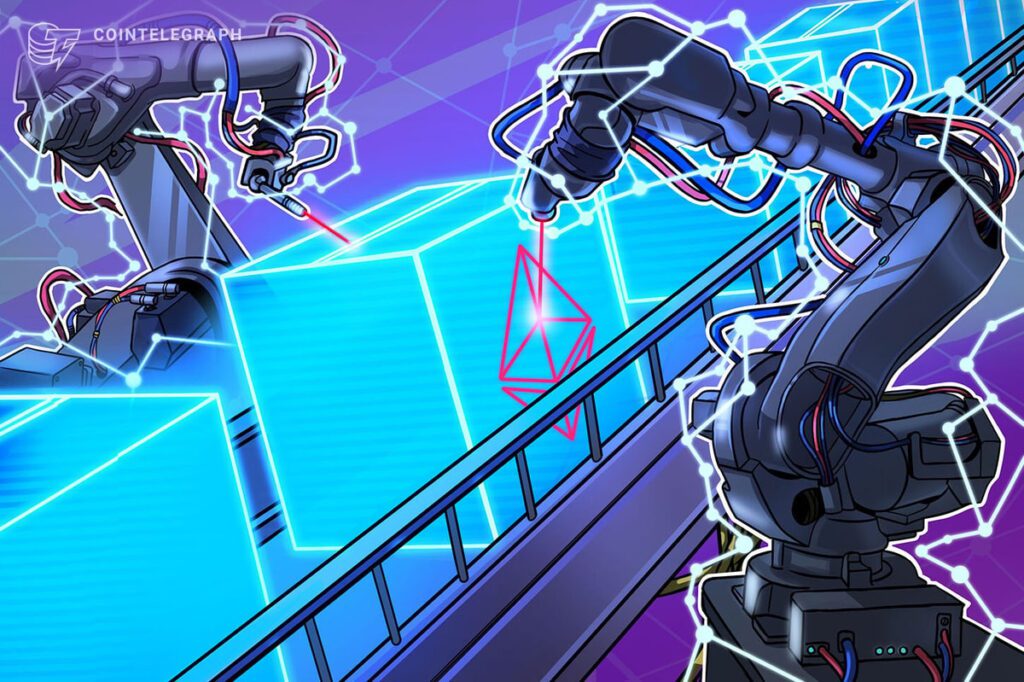With the introduction of a new Ethereum scaling technology called Pico Prism, Ethereum could be one step closer to achieving 10,000 transactions per second.
Ethereum scaling company Brevis on Wednesday announced a new state-of-the-art zero-knowledge Ethereum Virtual Machine (zkEVM) for real-time proofs.
This technology makes it possible to prove Ethereum blocks almost instantly using a regular retail game processor (GPU) instead of an expensive supercomputer.
“Brevis achieved real-time proof of Ethereum L1 using consumer-grade hardware,” the company said, adding that it used 64 Nvidia RTX 5090 graphics cards, its current flagship model for gaming.
In tests conducted in September, Pico Prism achieved 99.6% real-time proof in less than 12 seconds. Real-time proof (RTP) means generating cryptographic proof that a block was executed correctly faster than a new block is generated.
“This scales Ethereum 100x and is a big step towards a future where you can verify the chain from your mobile phone.”
Brevis has a roadmap to achieve 99% real-time verification on less than 16 RTX 5090 GPUs “within the next few months.”
A big step towards scaling Ethereum
This breakthrough means that computationally expensive proofs have finally caught up to the production speed block using affordable consumer hardware, and lightweight verification has become practical for the first time.
Currently, all validators re-execute every transaction to validate a block, which requires expensive hardware and creates a fundamental bottleneck, Brevis explained.
“Real-time proofs break this model: one prover generates a proof, and everyone else verifies it within milliseconds.”
The road to 10,000 TPS
According to Ethereum’s roadmap, validators will switch from replaying transactions to simply verifying ZK proofs, allowing the base layer to reach 10,000 transactions per second.
“If we scale Ethereum L1 by 3x per year, it will reach 10,000 TPS by April 2029,” said Ryan Sean Adams of Bankless.
Related: Ethereum Foundation roadmap to target zkEVM on mainnet within 1 year
Ethereum’s Fusaka upgrade, scheduled for December, will simplify real-time proofs, explained Bitcoin security researcher Justin Drake.
“EIP-7825 enables more parallel proofs through sub-blocks by placing a cap on per-transaction gas usage,” he said, adding, “By the end of the year, several teams will have certified all L1 EVM blocks on a 16GPU cluster, with total power consumption below 10kW.”
Phones as future nodes
This is a “huge step towards the future of Ethereum,” the Ethereum Foundation said, adding:
“ZK technologies like Pico Prism allow Ethereum to scale to meet global demand while remaining reliable and decentralized.”
“The future of the phone as a node is now a reality,” said technology entrepreneur Mike Warner.
Adams said that Ethereum is turning into a ZK chain, explaining that layer 1 will run global DeFi with large blocks of 10,000 TPS and nodes running on phones, and layer 2 will run everything else.
This is essentially the holy grail of blockchain, allowing massive scalability without sacrificing decentralization or security.
Magazine: Ethereum Roadmap to 10,000 TPS with ZK Technology: A Dummies Guide


